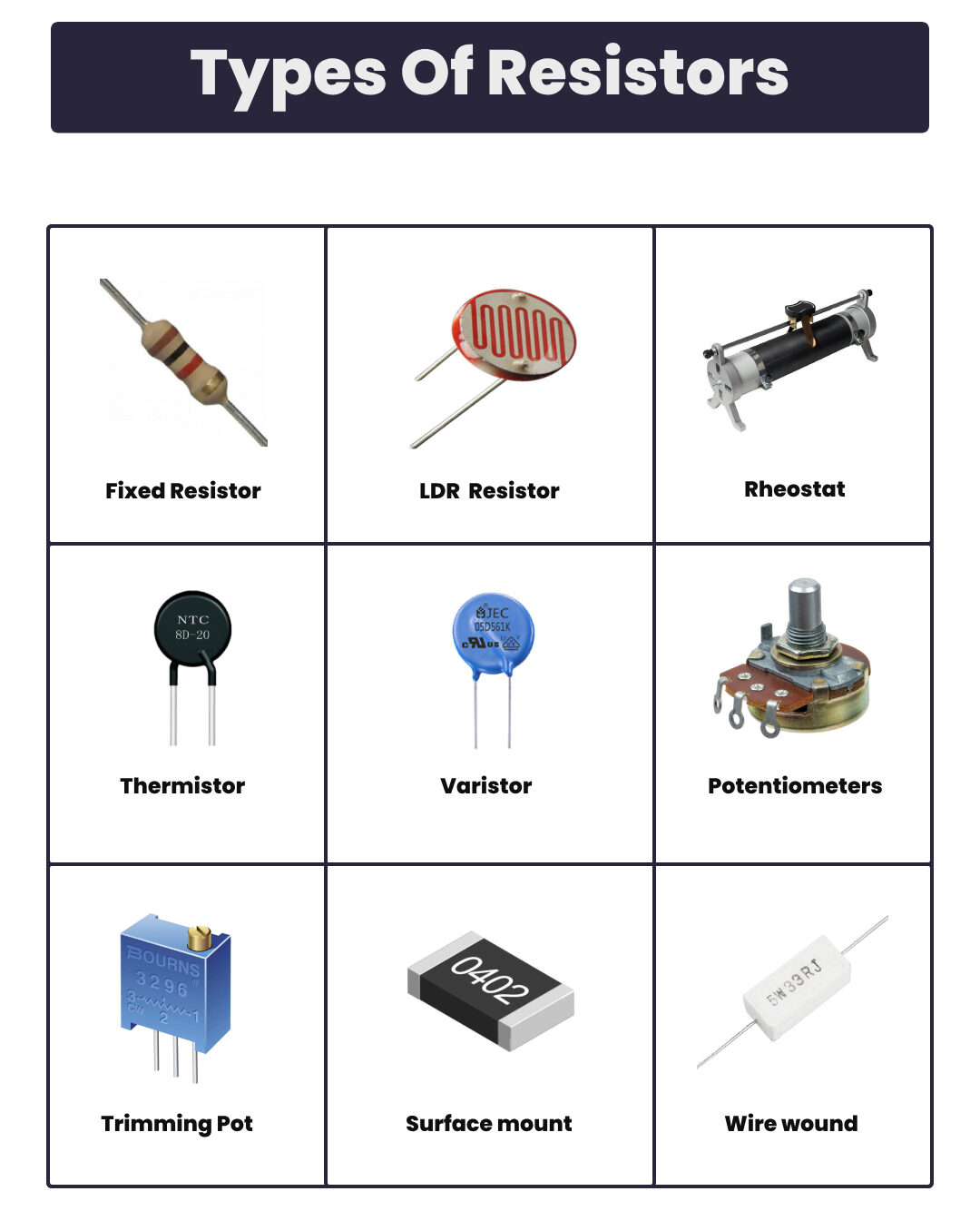Resistors are fundamental components in electronic circuits, providing precise control over current flow and voltage levels. They are used in various applications, from simple circuits to complex systems, to limit current, divide voltages, and protect sensitive components. Resistors come in many types, each with unique characteristics tailored for specific uses. Understanding the different types of resistors, including their construction, advantages, and typical applications, is essential for designing and troubleshooting electronic circuits effectively.

Fixed Resistors
Fixed resistors have a fixed resistance value that cannot be changed. They are the most common type of resistor used in electronic circuits.
- Carbon Composition Resistors: Made from a mixture of carbon powder and a binding material, they are known for their ability to withstand high energy pulses.
- Carbon Film Resistors: These resistors have a thin carbon film deposited on an insulating substrate, offering better stability and lower noise compared to carbon composition resistors.
- Metal Film Resistors: Known for their precision and stability, metal film resistors have a thin metal layer as the resistive element.
- Thick Film Resistors: Made using a thick film of resistive paste, these resistors are commonly used in surface-mount technology.
- Thin Film Resistors: These are similar to thick film resistors but use a much thinner resistive layer, providing higher precision and stability.
- Wire Wound Resistors: Made by winding a wire (usually an alloy) around a ceramic core, they can handle high power and are very precise.
- Metal Oxide Resistors: These resistors use a metal oxide film, providing better temperature stability and higher reliability than carbon film resistors.
- Metal Glaze Resistors: Combining metal with glass, these resistors are stable and can handle high temperatures and voltages.
Variable Resistors
Variable resistors allow the resistance value to be adjusted manually, making them useful for tuning and calibration in circuits.
- Potentiometers: These have three terminals and can be used as adjustable voltage dividers. They are commonly used for adjusting volume levels in audio equipment.
- Rheostats: Similar to potentiometers but with two terminals, they are used for adjusting current.
- Trimmers: Small, adjustable resistors used for fine-tuning circuit parameters.
Specialty Resistors
Specialty resistors are designed for specific applications where their properties can be advantageous.
- Thermistors: Temperature-dependent resistors that change resistance with temperature.
- NTC (Negative Temperature Coefficient): Resistance decreases as temperature increases.
- PTC (Positive Temperature Coefficient): Resistance increases as temperature increases.
- LDR (Light Dependent Resistors): Change resistance based on light intensity. Commonly used in light sensing applications.
- Varistors: Voltage-dependent resistors that protect circuits from voltage spikes by changing resistance with voltage.
- Magneto Resistors: Change resistance in response to a magnetic field, used in magnetic sensing applications.
Precision Resistors
Precision resistors are used in applications where high accuracy and stability are required.
- Precision Wire Wound Resistors: Offer extremely high accuracy and stability, suitable for calibration standards and high-precision circuits.
- Precision Thin Film Resistors: Provide high precision and stability with a thin resistive layer, used in high-accuracy measurement equipment.
High Power Resistors
High power resistors are designed to handle and dissipate large amounts of power without damage.
- Ceramic Resistors: Made from ceramic materials, they can handle high power and are used in high-voltage applications.
- Aluminum Housed Resistors: Encased in aluminum housings for better heat dissipation, these resistors are used in power supplies and motor controls.
- Chassis Mounted Resistors: Designed to be mounted on a chassis to help dissipate heat, used in high-power applications.